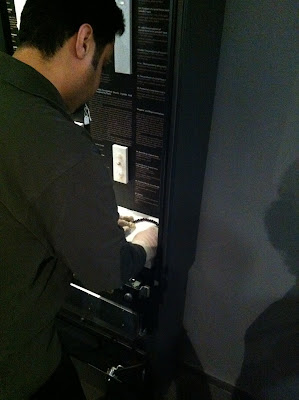The past couple of months, before the preview for the new Amricani Cultural Centre, have been hectic. We had the preview on February 24th, 25th, and the 26th for our VIP guests and an Open House on March 10th for DAI members. If you follow DAI’s Facebook page, you would have already seen photos from those nights (here and here).
We were all working long hours until the last minute trying to get everything done on time. Everyone was working together in the office and at the construction site on everything from brochures, booklets, posters, lighting, exhibition text, captions, translating, invitations, installation, and the list goes on.
While putting all our efforts in the completion of the new cultural centre, the office had to continue organizing the Cultural Season and focus on the ongoing international exhibition (currently al-Fann in Vienna
Since most of my art history education was European art, and The al-Sabah Collection is art from the Islamic world, I had to do some studying for the exhibition and help prepare myself and my co-workers to be tour guides for the opening. I was also involved with assisting our exhibition designer and graphic designer in preparing, printing and installing the exhibition’s wall panels and captions.
The Amricani Cultural Centre has two exhibitions. One is permanent and the other is in the temporary gallery spaces. The exhibition I was involved with is the temporary exhibition entitled: Treasury of the World: Jewelled Arts of India in the Age of the Mughals. You might have read about it—if not, let it be something you discover when you visit the exhibition after the official opening.
Working on this exhibition was so exciting. I had to visit the site several times as we installed the wall panels. When the installation of the jeweled objects had to start, no one was allowed in the space for security. One of the days during installation I was able to enter the exhibition space and was just so overwhelmed. The diamonds, emeralds and rubies just lit the entire space and it was breathtaking. I have looked through the catalogue of this exhibition and marveled at the objects a hundred times! But when you see them in front of you, it is something completely different. People who had the chance to see them so far have been amazed and impressed by their beauty. I really can’t wait for the opening so everyone can visit and see these magnificent jeweled objects that have travelled the world and are finally exhibited in Kuwait
All fuzzy images taken by iPhone.












